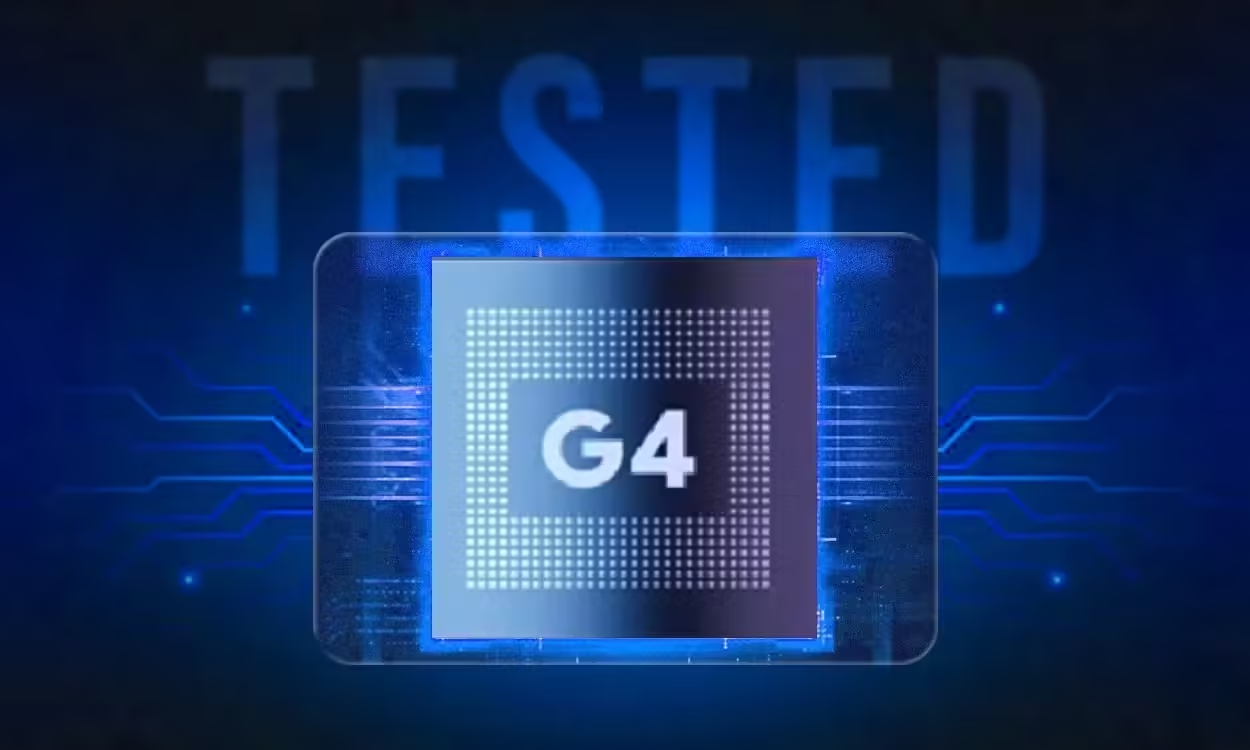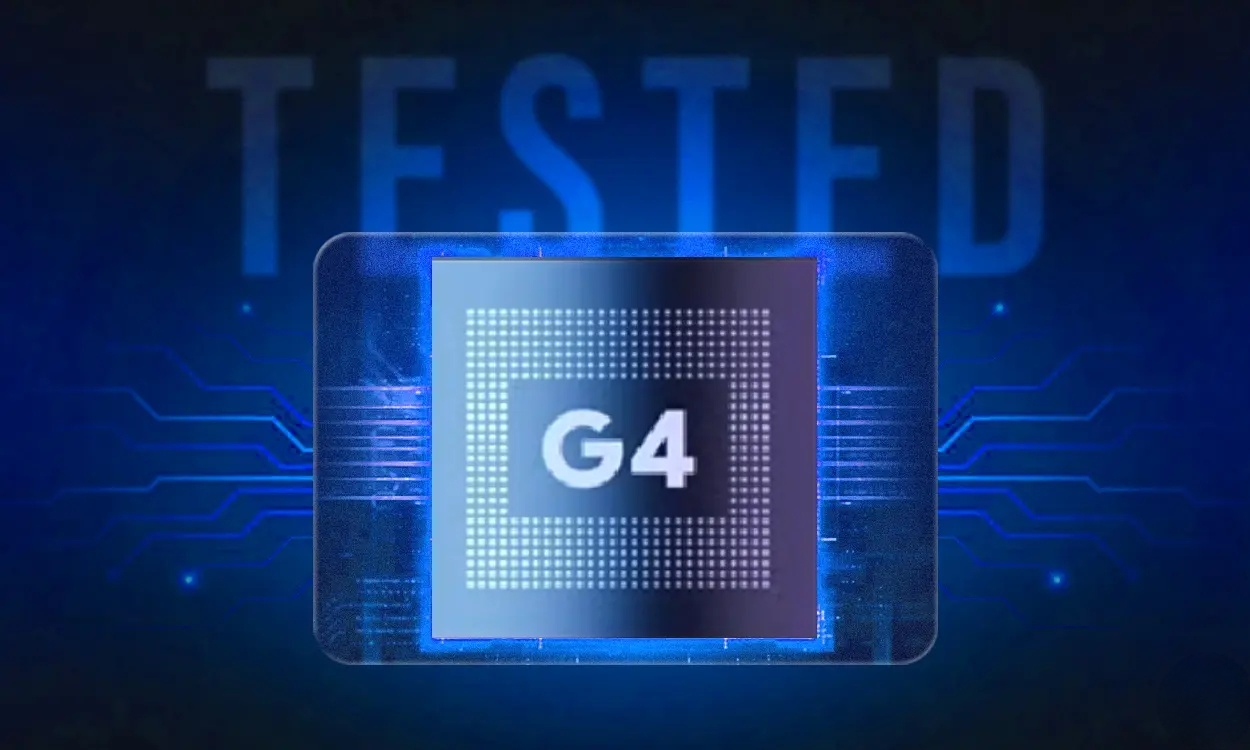
Google has unveiled its new flagship Pixel 9 series, powered by the Tensor G4 chipset. The Tensor G4 offers a modest upgrade over last year’s Tensor G3. To assess its performance improvements, we have benchmarked the Tensor G4 using Geekbench, 3DMark, AnTuTu, and other tests in this guide.
Google Tensor G4 Specifications
Before diving into the results, here’s a quick overview of the Tensor G4 specifications:
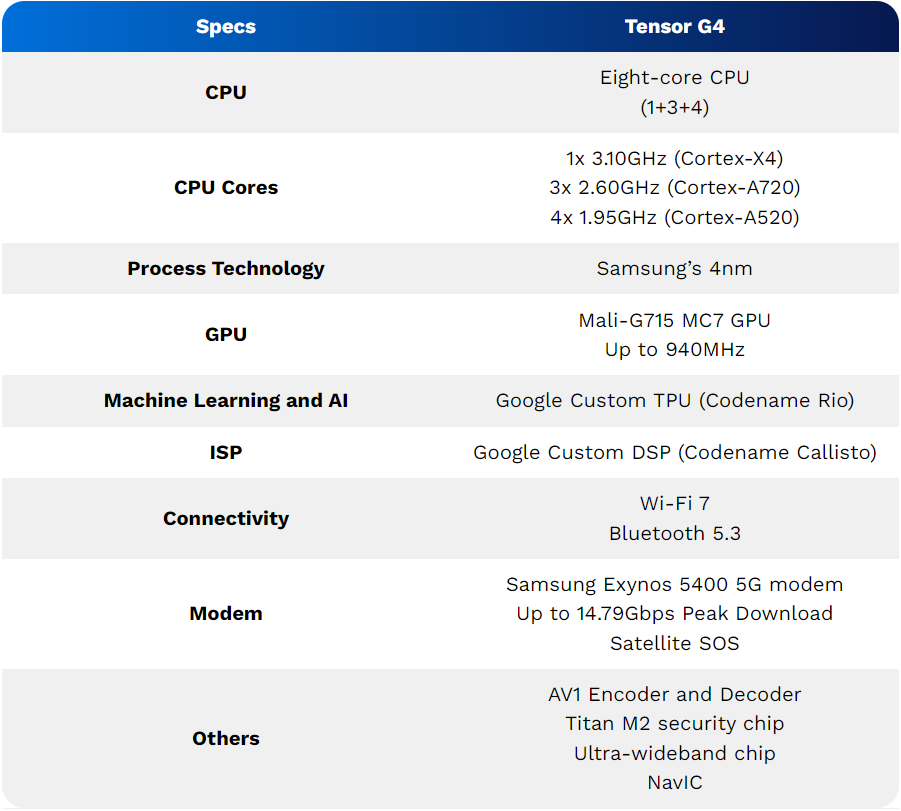
Tensor G4: Geekbench 6 CPU
In the Geekbench 6 CPU test, the Google Tensor G4 achieved a score of 1,897 in single-core tasks and 3,721 in multi-core tasks. These scores are notably low, even falling below those of the Snapdragon 7+ Gen 3, a mid-range Qualcomm processor.
We conducted the Geekbench benchmark multiple times to verify our results, but each attempt produced even lower scores than those reported below.
Despite featuring the latest ARM cores, the multi-core CPU score of the Tensor G4 couldn’t exceed the 4,000 mark. This is particularly surprising given that the larger Pixel 9 Pro XL, which includes a Vapor Cooling chamber, should have been able to handle better performance. Scores on the standard Pixel 9 are expected to be even lower. It appears that the older 4nm process node from Samsung is to blame.
Google likely did not opt for Samsung’s improved 4LPP+ process node and FOWLP packaging for the Tensor G4. Additionally, it seems that Google is significantly underclocking the CPU to manage thermals and preserve battery life. This is evident because the chipset’s performance is unusually low, even though the prime core can reach up to 3.10 GHz.
During testing, the device temperature remained below 37 degrees Celsius, indicating that performance is being sacrificed to extend battery life. In summary, the Tensor G4’s CPU struggles to deliver peak performance and cannot handle sustained workloads beyond the initial minutes.


Tensor G4: AnTuTu Benchmark
The Google Tensor G4 scored 1,253,407 in the AnTuTu benchmark test, which is surprisingly low for a flagship smartphone processor. In the AnTuTu CPU test, it earned just 337,131 points, while the 7-core Mali-G715 GPU scored 444,488 points.
Adding to the disappointment, Google opted to use older-generation UFS 3.1 storage in the Pixel 9 series instead of the faster UFS 4.0 storage. This choice resulted in a storage score of only 82,120 points in the AnTuTu storage test.


Tensor G4: CPU Throttling Test
The CPU Throttling test highlights the performance issues observed earlier. We conducted the test multiple times to evaluate the CPU’s behavior. In the first test, the CPU throttled to 71% of its maximum performance, while in the second test, it dropped to just 42%. Both tests were run for 15 minutes.
From the outset, the Pixel 9 series throttles the Google Tensor G4 CPU, and it only achieves slightly higher clock speeds if the thermals are managed effectively. In essence, the Tensor G4 CPU is not designed for sustained peak performance.
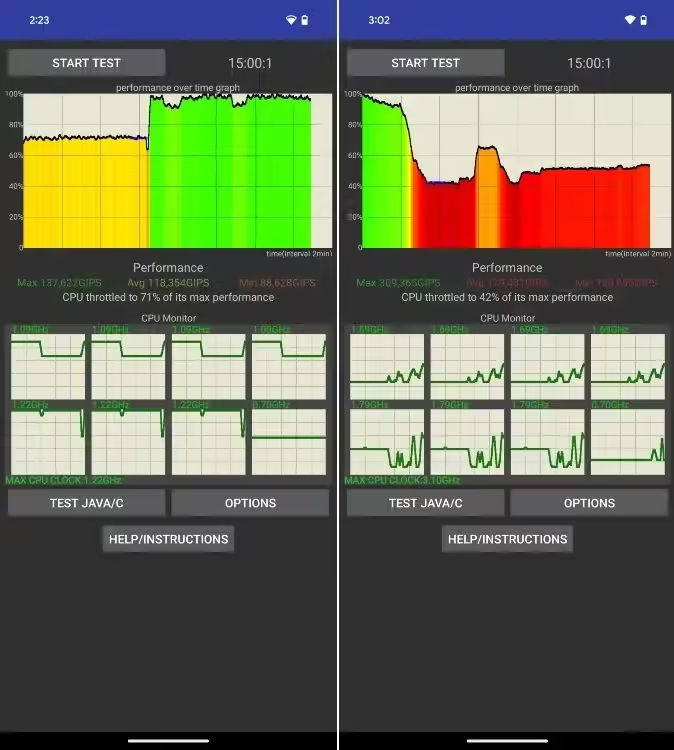
Tensor G4: 3DMark Wild Life Extreme Stress Test
We evaluated the 7-core ARM Mali-G715 GPU on the Tensor G4 using 3DMark’s Wild Life Extreme Stress test. Despite Google retaining the same GPU from last year, they have increased its frequency from 890MHz to 940MHz.
In our testing, the GPU achieved a highest loop score of 2,590 and a lowest loop score of 1,525, with a disappointing stability rating of 58.9%. During the stress test, the GPU temperature remained around 42 degrees Celsius. Overall, the GPU performance on the Tensor G4 is notably weak, reflecting poorly on Google’s choice.

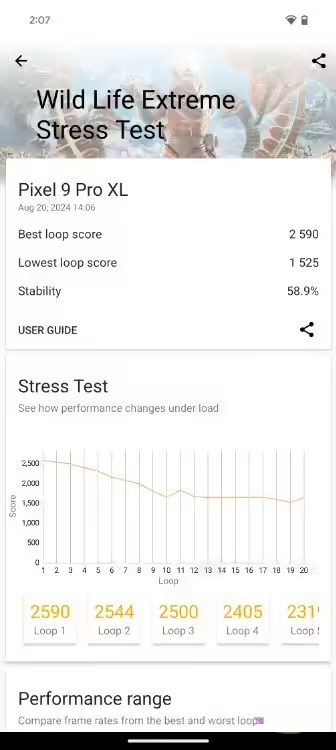
Tensor G4: Geekbench AI
To evaluate the NPU, or TPU as Google refers to it, we used the new Geekbench AI benchmark on the Tensor G4. Notably, the TPU on the Tensor G4 is the same as last year’s Tensor G3. Running on the TensorFlow Lite framework, it scored just 289 points in the Single Precision test.

For comparison, Apple’s A17 Pro scored 3,930 points in the same test with its Neural Engine. The GPU score for AI workloads is also notably low. While AI inference on the CPU yields respectable results, it still lags behind the competition, which is 2-3 times faster.
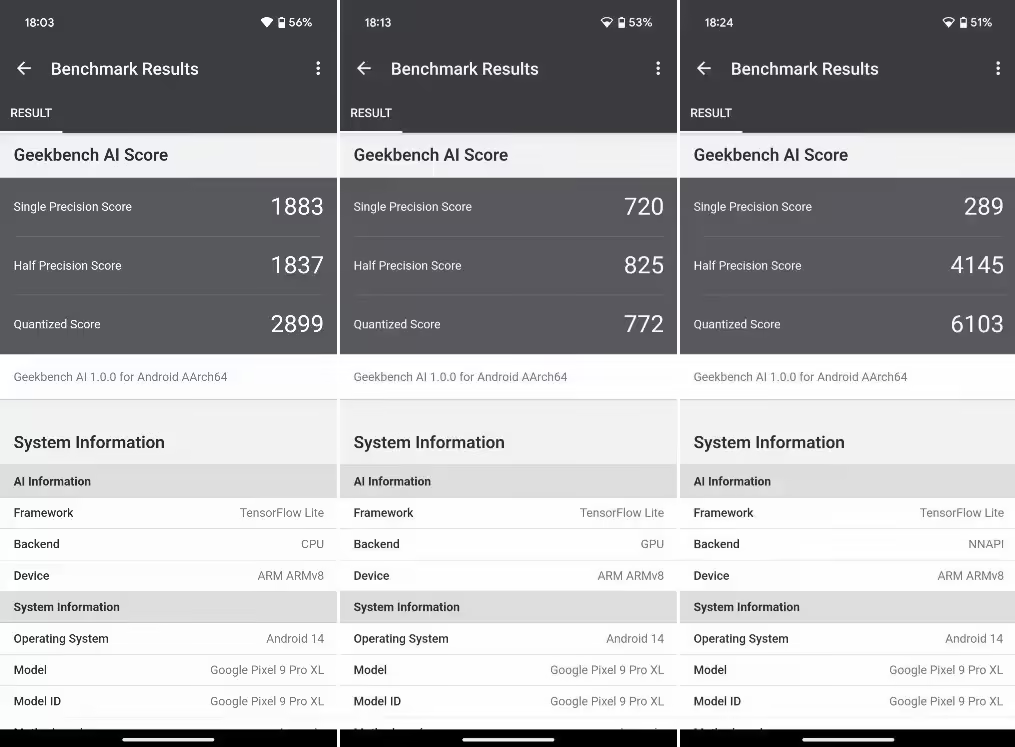
Tensor G4: 5G Speed Test
Finally, in the 5G speed test, the new Samsung Exynos 5400 modem achieved peak download speeds of 174.8 Mbps and peak upload speeds of 35.1 Mbps. We conducted several 5G speed tests, and the modem showed significant inconsistency. While it occasionally performed well, speeds often dropped to half of the peak values.

Tensor G4 Benchmarked: The Verdict
On paper, the Google Tensor G4 features the latest ARM cores and moderately high CPU clock speeds. However, Google’s management of the OS and processor is extremely conservative. The phone significantly underclocks the CPU to maintain cool temperatures and extend battery life, which drastically impacts performance.
The GPU performance and stability are also subpar, and the choice to use older UFS 3.1 storage is disappointing. Additionally, the TPU remains the same as the previous generation. The only somewhat positive aspect is the upgraded Exynos 5400 modem, though it still provides inconsistent speeds.
I understand that benchmark numbers don’t provide the full picture. However, when you’re spending over a thousand dollars ($1,490 in India, converted from INR to USD), you expect the phone to have a competitive processor.
In my view, the Google Tensor G4 does not meet the standards of a flagship processor. It looks like we might need to wait another year for Google to address these issues with its silicon or perhaps longer. If you’re already using the Pixel 9 or Pixel 9 Pro, we’d love to hear about your experience. Share your thoughts in the comments below!
